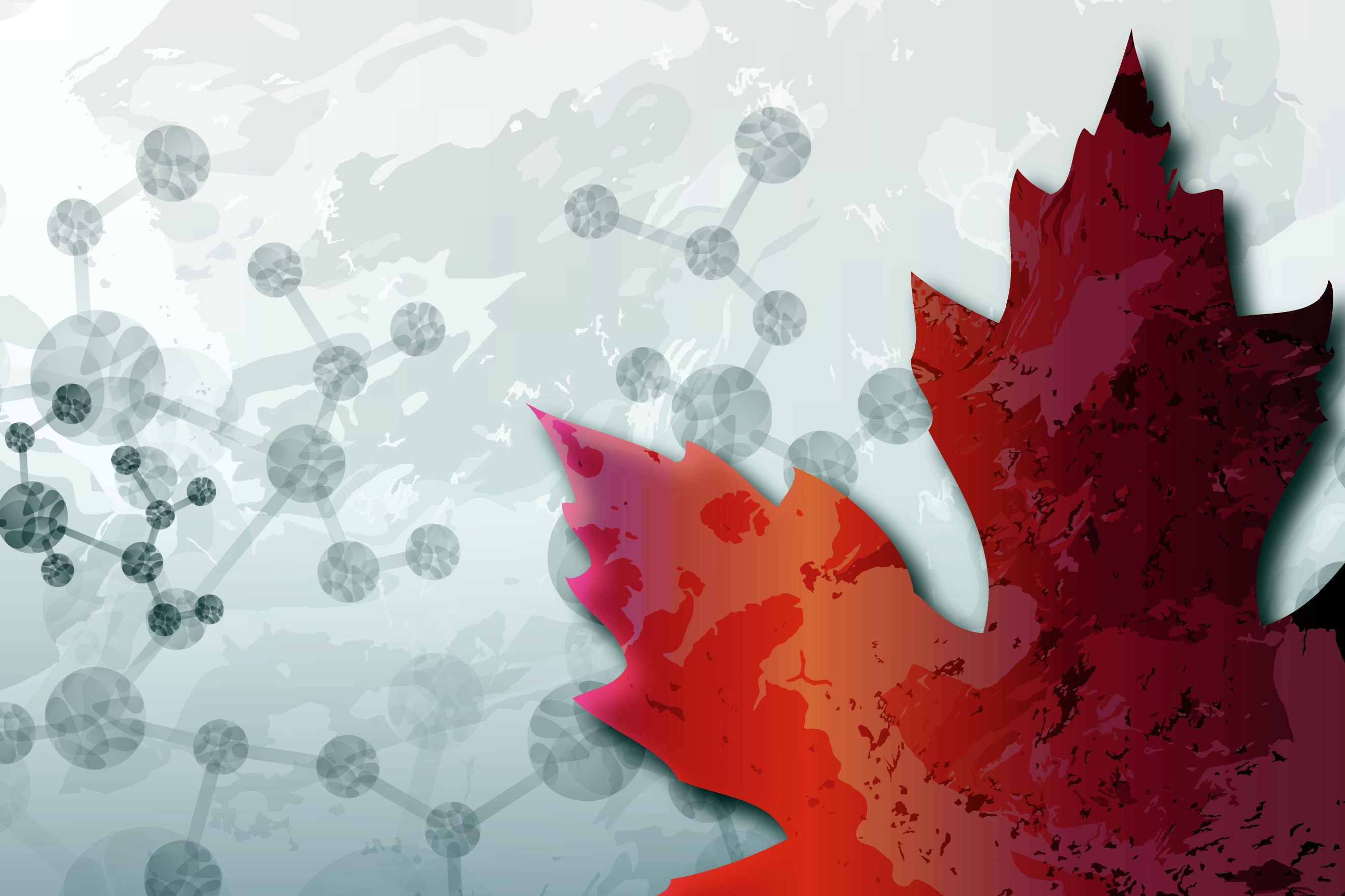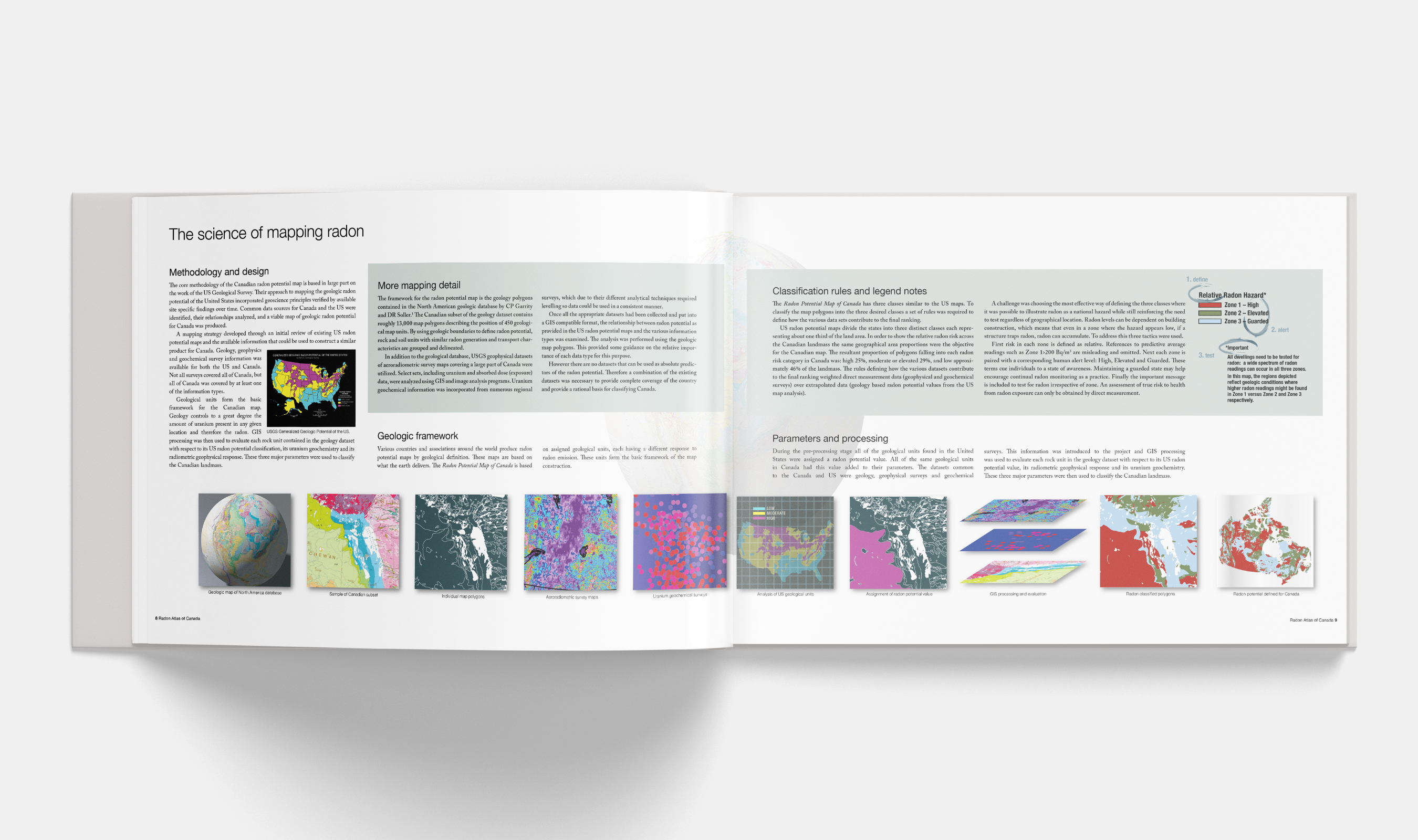Project
Radon Atlas of Canada
Client
Radon Environmental
Roles
Research, Copywriting,
Art Direction, Graphic Design
Team
Producer, Editor: Alan Whitehead
Creative Director, Geoscience Lead: Dan Innes
Geoscience Consultants: Frederick Breaks, Tom Morris
GIS Lead: Ward Kilby
Radon Atlas of Canada
Client
Radon Environmental
Roles
Research, Copywriting,
Art Direction, Graphic Design
Team
Producer, Editor: Alan Whitehead
Creative Director, Geoscience Lead: Dan Innes
Geoscience Consultants: Frederick Breaks, Tom Morris
GIS Lead: Ward Kilby
 Radon Environmental provides products and services to prevent public exposure to radon, an invisible carcinogen and the second leading cause of lung cancer worldwide.
Radon Environmental provides products and services to prevent public exposure to radon, an invisible carcinogen and the second leading cause of lung cancer worldwide. As a leader in their field, the client wanted a communication tool for researchers, industry and the public to visualize the risk and motivate testing. A collaboration between geoscientists, entrepreneurs and designers created the Radon Atlas of Canada, a resource in plain language.








The Brief
Design a visual learning resource with a multi-disciplinary team that would have the feel of a Canada National Research Council (NRC) publication to build audience trust and motivate action.
Approach
Research into NRC mapping resources and government radon risk maps outside Canada informed a design system recognizable to both mapping experts and the general public. Thirty-five percent of countries have radon data mapped. A review of these maps showed their usefulness in increasing public awareness, guiding building codes and prioritizing detector distribution in higher risk areas. The Radon Atlas of Canada would offer a way to understand geology’s role in the radon story.
In collaboration with a team of geoscientists, GIS experts and designers, the Radon Potential Map of Canada was developed as a first step. An overlay mapping series next brought in a tinted colour palette for investigating data relationships with areas of human use and activity, regional population studies with First Nations and expected population growth areas.
Design a visual learning resource with a multi-disciplinary team that would have the feel of a Canada National Research Council (NRC) publication to build audience trust and motivate action.
Approach
Research into NRC mapping resources and government radon risk maps outside Canada informed a design system recognizable to both mapping experts and the general public. Thirty-five percent of countries have radon data mapped. A review of these maps showed their usefulness in increasing public awareness, guiding building codes and prioritizing detector distribution in higher risk areas. The Radon Atlas of Canada would offer a way to understand geology’s role in the radon story.
In collaboration with a team of geoscientists, GIS experts and designers, the Radon Potential Map of Canada was developed as a first step. An overlay mapping series next brought in a tinted colour palette for investigating data relationships with areas of human use and activity, regional population studies with First Nations and expected population growth areas.
Challenges
Design challenges in this project were found primarily in defining a colour strategy. All areas of the country were at some level of exposure risk. How can this be clearly communicated? Three zones were established similar to mapping approaches by the United States Geological Survey (USGS). Each zone was defined by a colour and human alert level: red/high, green/elevated and blue/guarded. Accessible design informed the tone of the colours and layout.
Outcome
First published in 2011 and now in its third edition, the Radon Atlas of Canada is a large-format digital and print book. It contains the full map series along with an introduction to health physics, the mapping methodology and case studies.
Since publication, the Radon Potential Map of Canada and Radon Atlas of Canada are widely used and cited for visually communicating the hazard risk. Academic, public health and industry professionals include the Lung Associations, BC Centre for Disease Control and University of Calgary. Provincial, territorial and regional maps are now available to assist government planners and property developers.
Design challenges in this project were found primarily in defining a colour strategy. All areas of the country were at some level of exposure risk. How can this be clearly communicated? Three zones were established similar to mapping approaches by the United States Geological Survey (USGS). Each zone was defined by a colour and human alert level: red/high, green/elevated and blue/guarded. Accessible design informed the tone of the colours and layout.
Outcome
First published in 2011 and now in its third edition, the Radon Atlas of Canada is a large-format digital and print book. It contains the full map series along with an introduction to health physics, the mapping methodology and case studies.
Since publication, the Radon Potential Map of Canada and Radon Atlas of Canada are widely used and cited for visually communicating the hazard risk. Academic, public health and industry professionals include the Lung Associations, BC Centre for Disease Control and University of Calgary. Provincial, territorial and regional maps are now available to assist government planners and property developers.
Publication
Hystad P, Brauer M, Demers PA, Johnson KC, Setton E, Cervantes-Larios A, Poplawski K, McFarlane A, Whitehead A, Nicol AM (2012) Geographic variation in radon and associated lung cancer risk in Canada. Canadian Journal of Public Health:105(1):e4-10. doi.org/10.17269/cjph.105.4002
